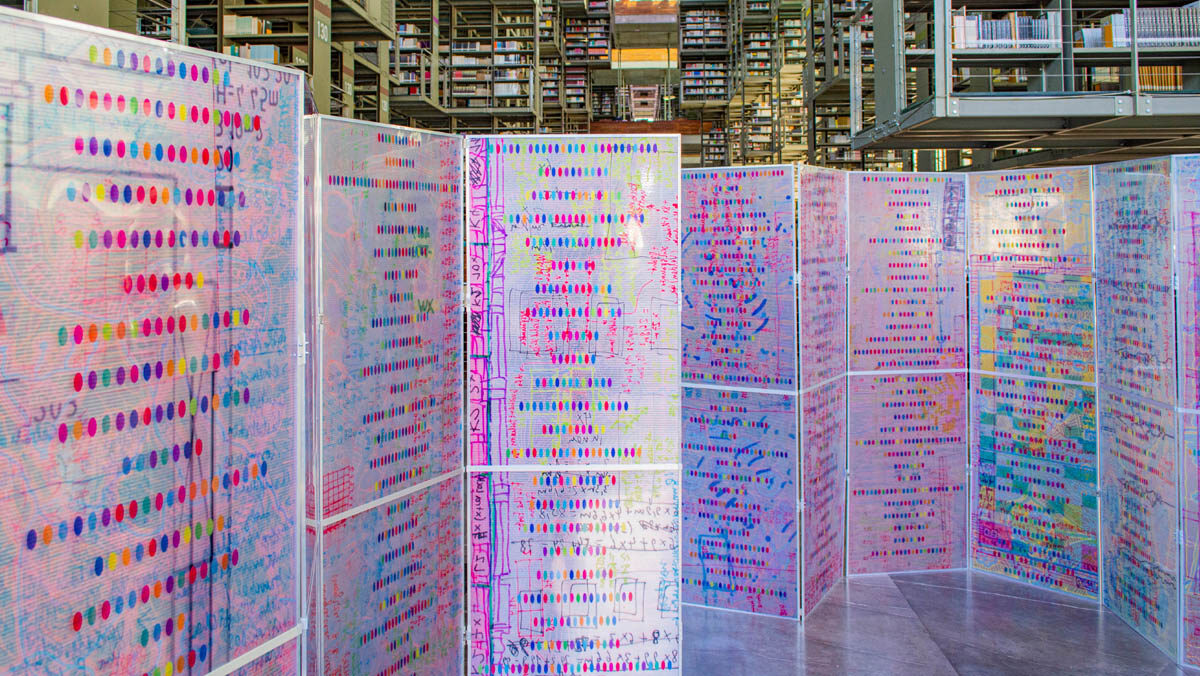
Coded records of personal perception and organic microscopic studies are juxtaposed with official statistics in a wavelike arrangement. On a total of 26 levels, each representing a month, the work displays a dense structure of numeric information, diagrammatic notes, mental maps and encrypted diary-like entries. The installation thus juxtaposes the inner cosmos with external developments during this time period and connects both dimensions in graphic-visual terms.
The spatial installation unfolds like a collage, accentuated by a filigree transparency. Behind it, letters, numbers and signs are hidden as codes that want to be deciphered. They embody an aesthetic examination of the Corona pandemic over a period of 26 months. On closer inspection, the individual parts come together to form an overall visual image.
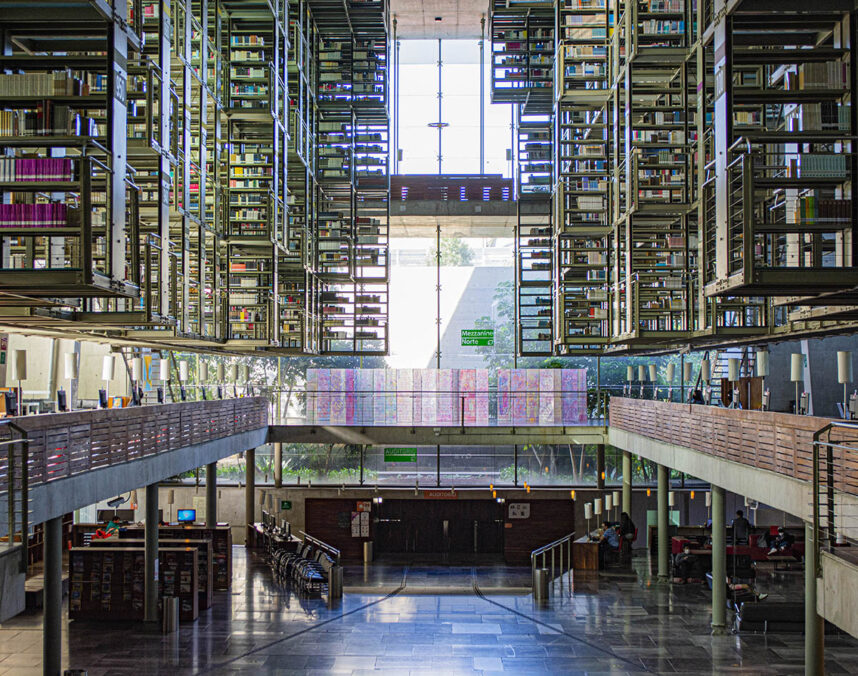
Ciudad de México, México
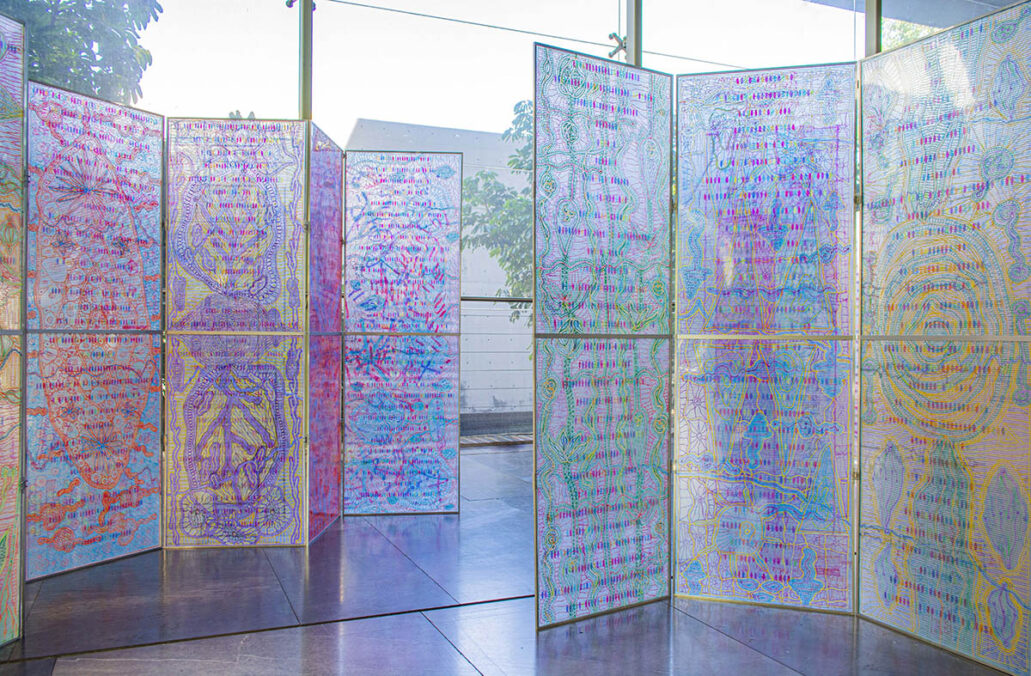
Ciudad de México, México
The lined-up surfaces interact with the space, but without forming a heavy mass. The lightness of the material contrasts the volume of the installation. It is not space-occupying, but -constructing. An important aspect of the work is therefore the intensive planning. Before the construction of the object, the conceptual process begins on the one hand, and on the other, the preoccupation with the necessary materials and spatial planning. The principle of collage and superimposition is also interpreted spatially. The individual layers of drawings, which are created over months (time), unfold their effect on the translucent surfaces in the space, they get a supporting body. Thus, the installation – in the sense of a space-time – can be interpreted as a further, artistic dimension. The systems, which seem chaotic at first glance, have an order or method.
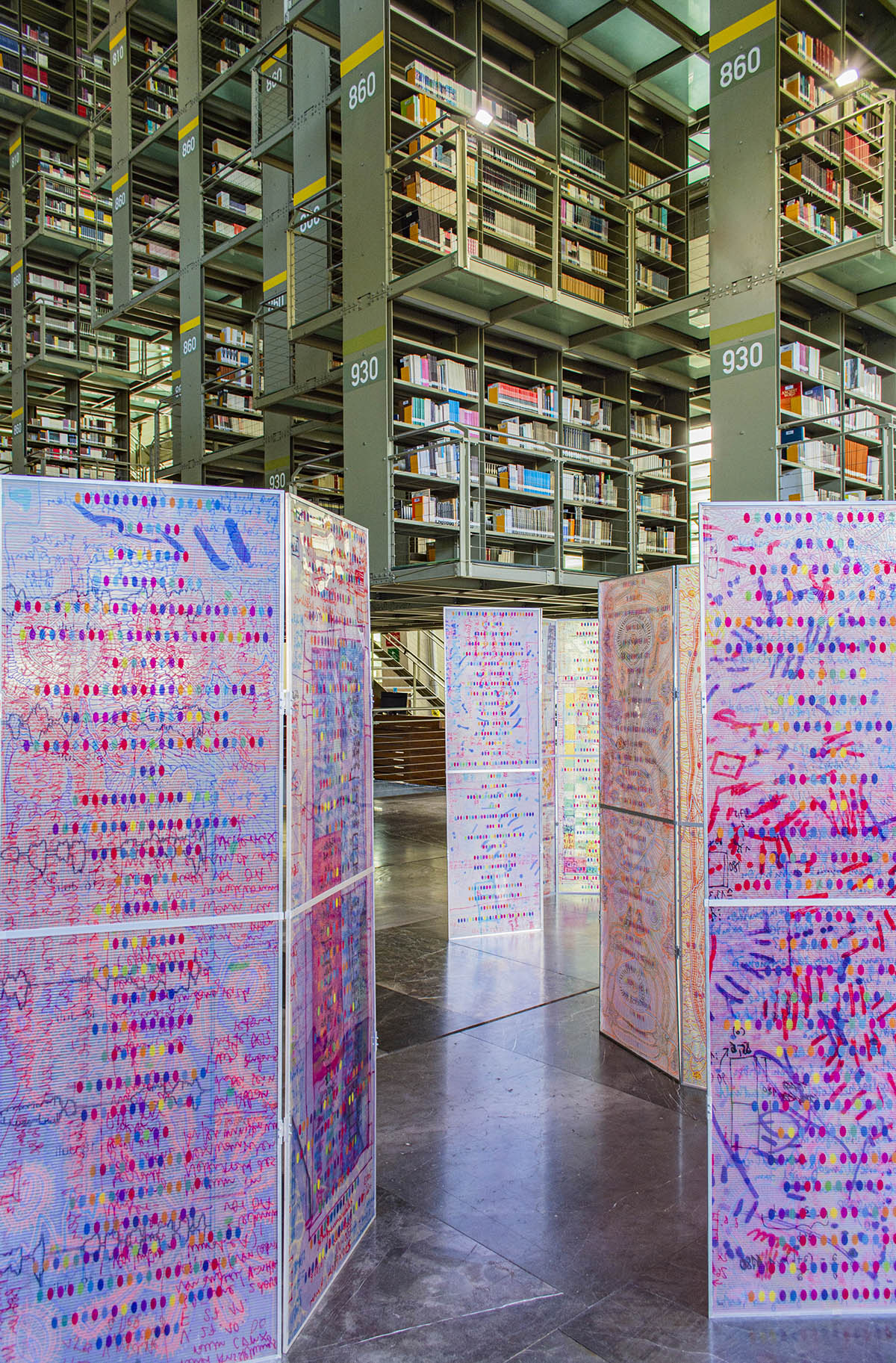
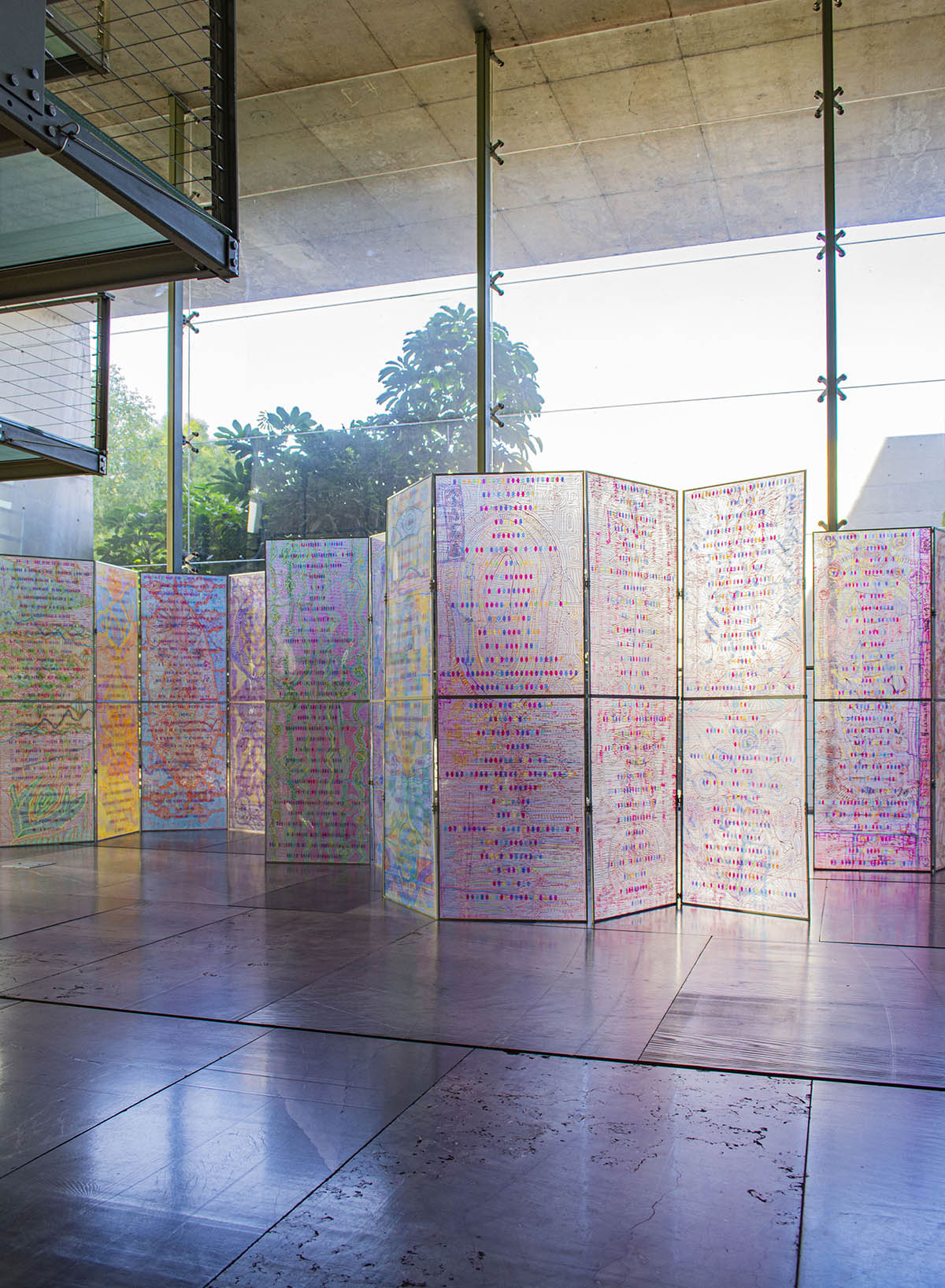
In an artist’s book, Shatalova documents word lists on each left page as a basis for data. They consist of one word or word chains (from Feb. 2020 to March 2022, a total period of 26 months or 1030 days) and describe the day in compressed form. Private as well as political topics and global changes are dealt with. The colored dots on the right page are a result of the opposite word, with each color symbolizing a letter (Latin or Cyrillic) or a punctuation mark. By translating the words into a colored dot system, the content transforms into an aesthetic visualization. Finally, the dots are transferred onto transparent foils, which partially overlap with other text passages and number systems. Each surface describes a month and has a counterpart, a second transparency, so that together they merge into a single entity.
These are not created chronologically but are developed methodically: The organic shapes and colors retrospectively visualize the emotions of the words; each reflected month thus represents an abstract-graphic level of emotion. For example, February 2020 is illustrated by broken colors such as purple and orange, while a happy summer month is expressed in yellow and green. The organic design reminds of cells, bacteria, viruses and other micro-biological silhouettes or contours. The inspiration for the shapes is taken from the book „Art and Science“ by Ernst Haeckel, who was an artist, philosopher, physician, and zoologist in the 19th century and created a graphic scientific monumental work. Hence, the subject of the Corona pandemic is emphasized by microorganic associations encoded in an aesthetic composition, i.e., the macro-level is symbolized by the microcosm.
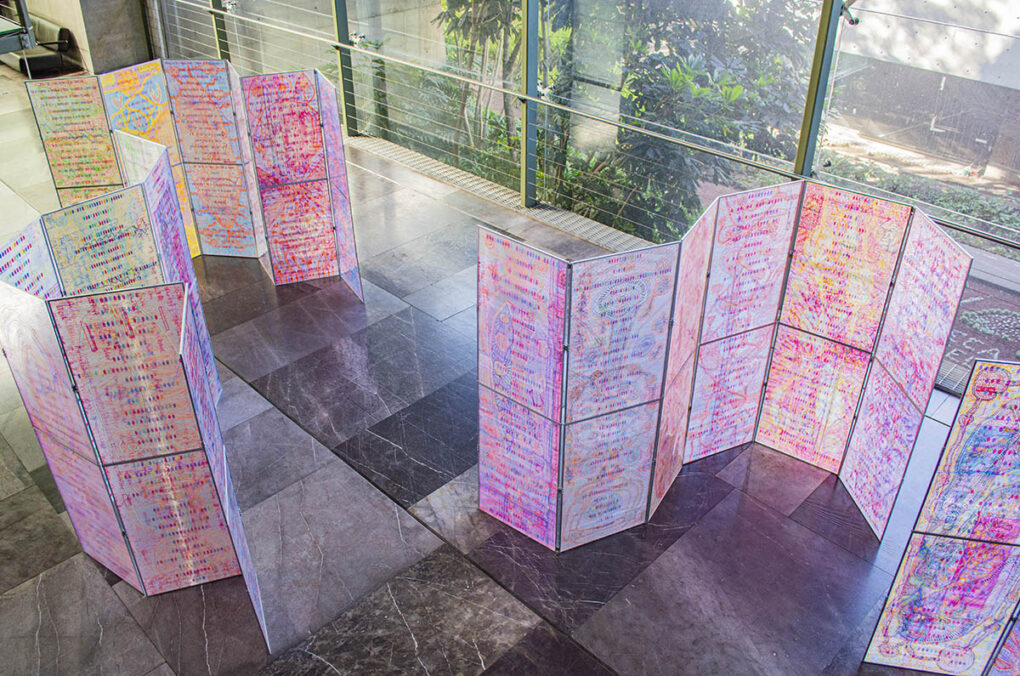
The pandemic data on Mexico, Austria as well as worldwide are also incorporated as graphics. A prominent problem is to find standardized data over this period. Different global attitudes and documentation methods play an impeding role. Therefore, WHO public statistics are used to maintain a pragmatic objectivity. The three graphics run throughout the 26 areas, forming a distinct flow of data. The transformation of all this information, or the coded visualization of overlapping layers, also reveals the autobiographical process consisting of experience (words) and memory (emotion). Therefore, it is measurable and felt time spans of a space-time that are now manifested in an artwork.
Looking back, Shatalova cannot fully decode every association, some remain encoded for her as well. However, they serve as a cartographic marker of a formative era. The Corona pandemic leaves its traces, which will tell of the past in the distant future. And Shatalova has put a mark in that trace.
Exhibition: Darja Shatalova: 1030 Days
Exhibition duration: 10 Nov. – 10 Dec. 2022
Address: Biblioteca Vasconcelos – Ciudad de México, México
Biography artist: Darja Shatalova (*1988, RU) is a multidisciplinary artist based in Vienna. She studied Transmedia Arts at the University of Applied Arts Vienna and before Mathematics Education at the University of Cologne. Her works oscillate between space-based installations, performances, sound pieces and artist’s books. A central element of the artistic work process is the collection and translation of data towards a structuring and ordering of current events and everyday life. Darja Shatalova has exhibited among others at Künstlerhaus Vienna, Taxispalais Kunsthalle Tirol Innsbruck, Kunstraum Niederoesterreich Vienna and Galerie3 Velden am Wörthersee. In 2019, she received the Starting Grant for Visual Arts from the Federal Ministry of Arts, Culture, Public Service and Sports and in 2020 the Working Grant from the Federal Ministry of Education, Science and Research. Her works are in the collection of the City of Vienna, the State of Tyrol, the Artothek des Bundes, as well as in the libraries of the Museum der Moderne Salzburg and the mumok Vienna. www.darjashatalova.com
Biography author: Marija Nujic, born in 1987, is an art historian, working in art theory and cultural studies with a focus on gender and performance theory. After working as a curatorial assistant for the Austrian Pavilion at the 2019 Venice Biennale d’Arte, Nujic advocates for art and cultural projects focusing on various aspects of sustainability. Art spaces, with their architectural, historical, and cultural characteristics, are at the center of a profound engagement between the artistic practice of the artists, subversive and sociopolitical subjects, and cultural theoretical approaches. Nujic is particularly known for her publications and close collaborations with the contemporary Vienna art scene. www.instagram.com/marija.nujic/



